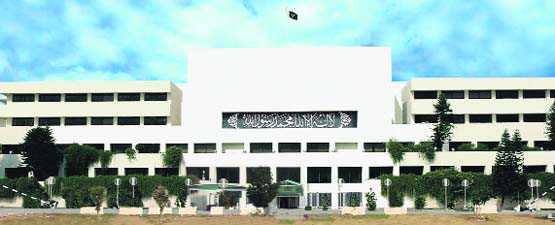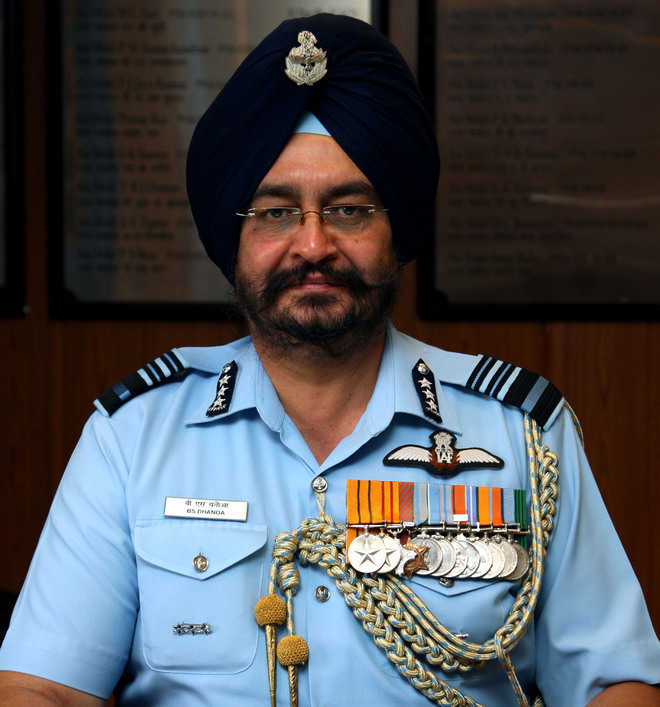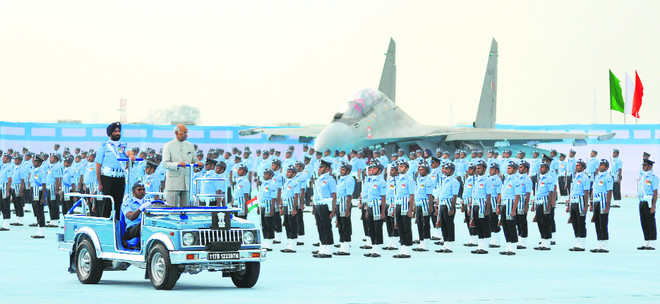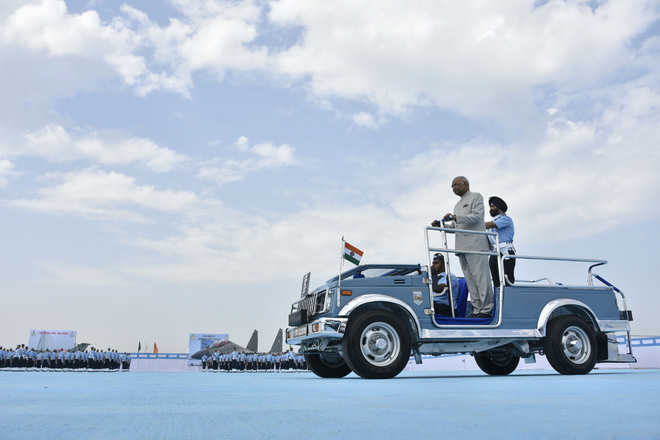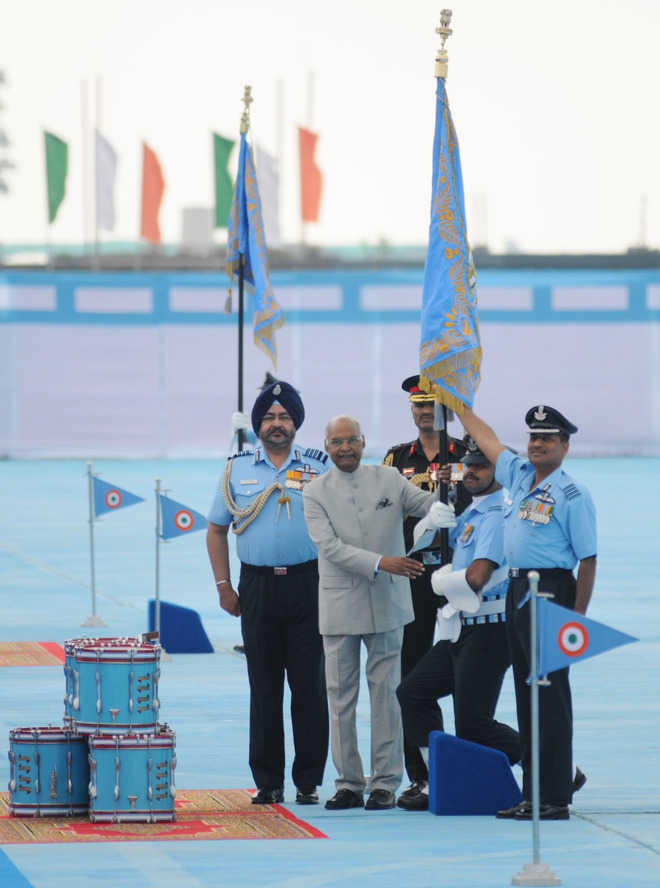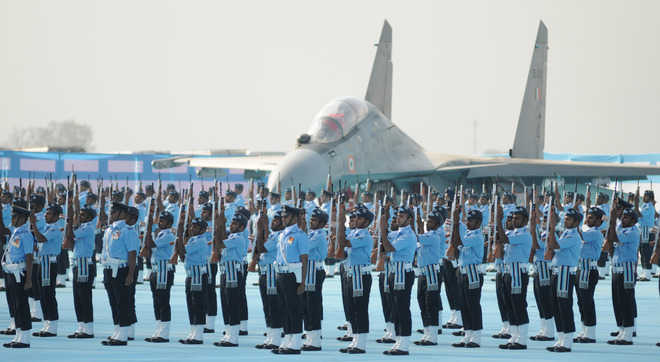PLAINSPEAK The CM says it is difficult to pull the plug on free power, as it will add to farmers’ woes and create a political crisis in the state
ON ILLEGAL MINING, GOONDA TAX
I admit these things have hurt the government’s image. But we have tightened the screws.
ON GIVING UP FREE POWER
Why can’t big farmers who have income coming from other sources give up power subsidy?
ON HIS MULTIPLE PORTFOLIOS
I have got 40 portfolios to take care of. I can’t sleep at night. I have to go through all the files.
ON PARTAP BAJWA’S VERBAL VOLLEYS
It is not fair on Partap’s part to speak against his own government. This is a pettyminded approach.
ON MANPREET, SIDHU & JAKHAR
Jakhar is a fairminded person. Manpreet is good at his work. Sidhu is vocal but does his homework.
Amid dwindling electoral fortunes of the Congress since the 2014 Lok Sabha polls, Captain Amarinder Singh led the party to a spectacular comeback in Punjab on March 11 last year – that also happened to be his 75th birthday. But the euphoria wore thin rather quickly.
 SANJEEV SHARMA/HT PHOTO■ CAPTAIN UNPLUGGED: Punjab chief minister Captain Amarinder Singh talking to Hindustan Times at his official residence in Chandigarh.A year into his second term at the helm of the border state, the erstwhile Patiala royal has been in a firefighting mode. The implementation of a raft of promises – debt waiver, unemployment allowance, free smart phones, hiked social pensions and what not – made in the election manifesto has become a daunting challenge for his fund-crunched government. A watered-down scheme for farm loan waiver has already led to dissatisfaction. As a number of states head for polls this year, his role becomes all the more significant as the Congress needs to showcase its performance in states where it is in power. And there aren’t many.
SANJEEV SHARMA/HT PHOTO■ CAPTAIN UNPLUGGED: Punjab chief minister Captain Amarinder Singh talking to Hindustan Times at his official residence in Chandigarh.A year into his second term at the helm of the border state, the erstwhile Patiala royal has been in a firefighting mode. The implementation of a raft of promises – debt waiver, unemployment allowance, free smart phones, hiked social pensions and what not – made in the election manifesto has become a daunting challenge for his fund-crunched government. A watered-down scheme for farm loan waiver has already led to dissatisfaction. As a number of states head for polls this year, his role becomes all the more significant as the Congress needs to showcase its performance in states where it is in power. And there aren’t many.
In a wide-ranging interview with Executive Editor Ramesh Vinayak and Senior Assistant Editor Navneet
Sharma in Chandigarh, Amarinder acknowledged the tough challenges that he faces while exuding a sense of optimism on stabilising the state’s ever-shakier finances. Excerpts:
How do you look back at your first year?
It’s been a tough one because we took over a sinking ship. There was no money and the debt was overflowing. Salaries got delayed. The treasury only had bills. Recovering from a debt of Rs 2.08 lakh crore is not easy. Look at the interest on that.
What is the way forward?
We are raising revenue and cutting costs. In my last tenure (2002-07), there was surplus. After giving each MLA Rs 100 crore for their constituencies before the assembly elections in 2007, we left a surplus of Rs 1,600 crore in the state treasury.
You were upbeat about GST. Has it helped?
No, it hasn’t to the extent we expected though there has been an increase in collection. That is because of the lacunae in implementation. The situation has been aggravated by delays in the release of the state’s share. I still maintain that the idea of GST, originally mooted by former prime minister Manmohan Singh, is sound. Its execution needs a relook.
Do you feel burdened by expectations and promises that you made?
We are trying to fulfil the promises. Today, I released ₹60-odd crore for debt waiver to 30,000 farmers. We started with Mansa. We will give the waiver to 50,000 farmers in Gurdaspur next week. We have another problem. Farmers are passing on the debt. If someone has 40 acres, he will give two acres to his son and claim the debt in his name. That’s what SDMs are checking. This fraud can’t go on. That is why we are going slow. We have ₹4,000 crore for this.
Is debt waiver the solution?
No, it is not. It is only assistance. The only solution is to raise income. We have been feeding the country for 50 years. Today, India hopes to grow at 7.4%. Our growth is 5.6%. Agriculture is not the solution. We make efforts to bring industry. We are now giving power at Rs 5 a unit. We have to change the cropping pattern. I’ve been talking about diversification since 1985.
The debt waiver implementation has left farmers dissatisfied. What’s gone wrong?
That is a sweeping statement. Nothing has gone wrong. Probably expectations were too high and the farmers expected I would wave a magic wand to waive their debts. Things don’t happen like that, especially when the economy of the state is in such a mega mess, and we did not get any support from the Centre. We had not really set out a time-frame for implementation, but are committed to completing the process for 10.25 lakh farmers by November.
How come nothing has changed?
These fellows (the Akalis) don’t do it. The moment they come to power, they halt it. Cases are slapped. No officer has the courage to take it up. Last time, we had the farm-to-fork project with Reliance Group. It was stopped. They later went back to Mukesh (Ambani) to ask him to return but he refused.
Is diversification possible without the Centre’s assistance or logistical support?
The private sector has grown strong. When I met Mukesh recently, I talked to him to look at it again. He promised a second look. We hope to rope in others too. We are counting on private investment. There is no other way.
Will you bite the bullet on free power?
No, it is difficult. It will become a political crisis. The farmers have been suffering. Of 17 lakh farming families, 10.25 lakh are small farmers. There is already one suicide a day. If free power is cut, they will be in a worse situation. I am trying to do something else. There are 13.5 lakh tubewells. We have chosen 900 in six villages where we are installing meters to gauge consumption. The Akalis have started creating a ruckus. The object is not to save power, but water. We are heading for a crisis. If this continues, Punjab will become a desert. Sub-soil water has gone down to 1,200 feet in Sangrur, Patiala and Bathinda, where it used to be available at 80 feet.
What do you make of Niti Aayog’s plainspeak when they told Punjab to forget about food security?
They weren’t so blunt. They talked about diversification. We’ve been saying the same thing. I told them to support us. They asked for a proposal. They give support to wheat and paddy. I sought price support for potatoes and mustard seeds. There was nothing negative at that meeting. We had similar thoughts on diversification.
You appealed to big farmers to give up subsidy but not many came forward. Why shouldn’t your party leaders show the way?
It’s just selfishness. Why can’t farmers who have income coming from other sources give up power subsidy? What is their problem? Manpreet Singh Badal, Navjot Singh Sidhu and Sunil Jakhar have agreed to give it up.
There has been a controversy over illegal mining and goonda tax. Has this dented your government’s image?
I admit these controversies have hurt the government’s image to an extent. But we have tightened screws. I flew down to Nakodar on Wednesday and checked if there was any illegal mining there. There was not a single machine.
Now, there are allegations being levelled against (minister)
Charanjit Singh Channi.
If an uncle or nephew is doing something, you can’t blame the minister. I have only read the allegations in newspapers.
Was Rana Gurjit’s resignation a setback?
I don’t think so. He chose to go on his own. I didn’t ask him to. There are two aspects. If somebody sets up a company and there are some friends who invest 10% in it, this has been happening in the industry since long. But the thing that he should not have done was to take Rs 5 crore from the contractor because of his portfolio. I think he realised and sent in his resignation.
You promised to bring a law on conflict of interest. What is holding it back?
Nothing. But you have to appreciate that this is going to be the first of its kind, so naturally it’s taking us time to thrash out the details. All MLAs declare their assets on January 1, which is a step towards ensuring there is no misuse of position.
The budget session starts on March 20. We have a doublebarreled opposition. How do we ensure the smooth functioning of the House?
People in the House are sadly only interested in getting their names published in newspapers. They shout and jump up and down. Their names are printed. (AAP leader Sukhpal) Khaira keeps talking and his picture appears daily in print.
In one of your interviews with HT, you said you would like to groom your political successor.
The final decision will be of the Congress leadership. I have one or two names in mind that I will share with the Congress president (Rahul Gandhi) when I meet him.
How will you rate the performance of Manpreet Badal, Navjot Sidhu and Sunil Jakhar?
Jakhar is a good president. He is liked. He is fair-minded. Manpreet is good too. He is serious and hardly ever talks. People think Navjot is vocal but he quietly does his homework. He knows all about his ministries.
What about the cabinet expansion?
The cabinet expansion was to be done around this time but the Congress president and I could not coordinate our meeting. He had to go abroad to see his grandmother. The moment the budget session is over I will go to Delhi for the discussion. I have 40 portfolios and can’t sleep at night. I have to read all the files.
The Theresa May government has said it will raise the issue of British national Jagtar Johal with PM Narendra Modi during his visit to London for the Commonwealth meeting. What do you have to say?
This man is an outright gangster. Pakistan is using a clever ploy. The borders are sealed. Pakistan is looking at sympathisers, chaps in Germany or Canada. They watch their activities on social media. They pick them up and send them with money. They use them to supply weapons. No one in intelligence knows who these guys are initially. Johal was also a part of this gang. Now, the National Investigation Agency (NIA) has him.
The Congress is having its plenary session. What is your recipe for its revival?
Look where we are in Rajasthan and Madhya Pradesh today. These are ups and downs. Those in the government today had just one seat at one point of time. I don’t think we need to worry. We are an old party with an established base. We are winning Rajasthan, Madhya Pradesh and Chhattisgarh. Who knows what will happen in 2019? The trend is changing.
The Modi government has been criticised for snubbing Canadian PM Justin Trudeau. What is your view?
That is for the (Narendra) Modi government to say. I can’t be expected to comment on their behalf. In Punjab, Trudeau was accorded due welcome, as per protocol, and I personally had a useful meeting with him. The Canadian prime minister came out with a categorical assurance that no pro-Khalistani elements or sympathisers were being encouraged, in any way, by his government.
You have maintained that the Congress needs to strengthen its regional leaders.
There is no interference from Delhi. The Congress president has given me a free hand to function. When I have to induct any minister, I consult the leadership. The last time I made my cabinet, no one interfered.
What is your equation with Modi?
There are two aspects. At the political level, we are different parties. We have our own stands on issues. When (Atal Bihari) Vajpayee ji was were there, I had no trouble with the government. We got their full support. The same thing was done by Manmohan Singh. If you recall once in the assembly, Mrs (Rajinder Kaur) Bhattal told (Parkash Singh) Badal saab, “If you have any problem with Delhi, tells us.” He said, “Bibi ji tussi dur hi raho, sannu twadi lod nahin hai, we are managing fine.” Now also, whether it is Mr Modi, Gadkari, Jaitley, Uma Bharti or whoever I have met, I haven’t had any problem.
Anything you expect from the Modi government?
They have to function within the framework. Whatever we have gone for or asked them to expedite, they have helped. For instance, they went out of their way on CCL (cash credit limit).
There have been rumblings of dissent from Congress MP Partap Singh Bajwa and some others. What do you have to say?
It is not fair on Partap’s part to speak against his own government. This is a petty-minded approach. You belong to the Congress, you support your government. If you don’t want to support your government, then what are you in the Congress for?
He said the government is being run by bureaucrats and there is very little political input.
He can say that because I have 40 departments. Does he know that I sit up till midnight or 2am reading files? I cleared 5,500 files and held 362 departmental meetings in a year.
Can you tell us three things you would like to do in your second year?
State finance is number one priority and then, of course, jobs, industry and agriculture. These job melas we are doing, hopefully we will finish the year with about three lakh jobs. The third thing is to keep peace. I am going to be tough on all gangster, drugs business. You can see the change already.
Leader of opposition Sukhpal Khaira and some Congress MLAs have been raising the accessibility issue.
This is incorrect. There is no day I don’t have MLAs sitting here with me. I had a meeting of all Congress MLAs for two days last week. I met all secretaries, too. We discussed issues related to their constituencies. Before that, I called MLAs of different districts once a month for lunch and discussion. That’s collectively. Privately, they come for something or the other.
In one year, you will be facing Lok Sabha elections? Which party will be your main opponent in Punjab?
There are three parties – the Congress, AAP and Akalis. The AAP is on the verge of collapse because there is no support left for them. The Akalis are trying to put their act together, but they won’t gel. If we play our cards right, we will be fine. We have to focus on development. Last time, we didn’t do it. In 2002, we won only three of the 13 seats. My understanding with (then finance secretary KR) Lakhanpal was that as finances were bad, don’t take any finances for one or two years and after that whatever you want. We stuck to it. In that one year, we could not build a road. The backlash came in the parliamentary polls. This time, we are not doing that. I have just announced projects worth Rs 123 crore for Shahkot.
Your party MLAs expect you to act against the previous Badal government, but you have refrained.
That’s a primary sort of demand. I have told them there is a law in this land. I can’t just catch hold and shove them behind bars. Give me facts and we will look into them. We are looking into their transport business. But they are clever. They have gone off to Himachal. We have to have facts. I’m not going to do what they did to me. After 13 years, both cases against me are still in court. People don’t seem to know that.











 SANJEEV SHARMA/HT PHOTO
SANJEEV SHARMA/HT PHOTO
